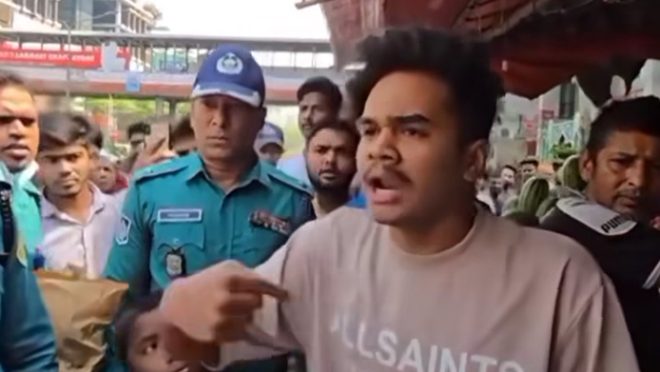‘Who gave you the right to destroy my source of income if you cannot give me a job’
‘Who gave you the right to destroy my source of income if you cannot give me a job’

Youth unemployment in Bangladesh remains a serious issue. As of 2023, the unemployment rate among young people stood at 15.74%, showing only a slight improvement from previous years. The Bangladesh Bureau of Statistics (BBS) estimates that nearly two million individuals aged 15-29 are unemployed, making up 7.2% of the youth labor force. Among them, 31.5% have completed higher education, highlighting the difficulty even educated individuals face in securing jobs.
Due to limited job opportunities, many young people turn to self-employment and small businesses. Such examples are street carts selling quick and easy fast food, which are common on the streets of certain areas such as Khilgaon and Dhanmondi, but people may not be aware that most of the food stalls on these streets are illegally operating their business without any permits. The busy streets prove to be a good source for a livelihood.
In Dhanmondi, Dhaka, a young entrepreneur operating a food cart was detained by police after his cart was reportedly destroyed. When his friend arrived to help, he was also taken into custody. Although the food cart owner was later released, his friend remained in detention.
A video of the incident has been circulating on social media, showing the food cart owner confronting the police about the destruction of his cart. In the footage, he questions them, saying, “I have to work on the streets to earn a living, even though I am a college graduate. Can you give me a job? Why did you destroy my only source of income?”
The legality question for these small businesses is another serious burden when the youth are taking their own initiatives to earn a living. Unemployment leaves very little capability for a young individual to invest in his business initially, he has to start somewhere, and these small stalls are a viable option, yet the government who was supposed to look after and ensure a productive economic opportunity is a thorn in progress.
Therefore, it is not illogical for someone to wonder, what are his options? The very institutions meant to enhance his life are acting as the barrier to improve it. The same frustration can be felt hearing the young man’s voice in the video. The government programs such as SEIP or BTAK which provide vocational training to the unemployed are not doing so with widespread reach. Their limited capacity is not even creating a dent in the problem for the nearly two million unemployed, a number which is thought to be much higher.
Addressing youth unemployment requires not only expanding job opportunities but also ensuring a supportive and secure environment for those striving for self-employment, which means investing in education, training and other economic measures which impacts the country’s GDP growth long term.


